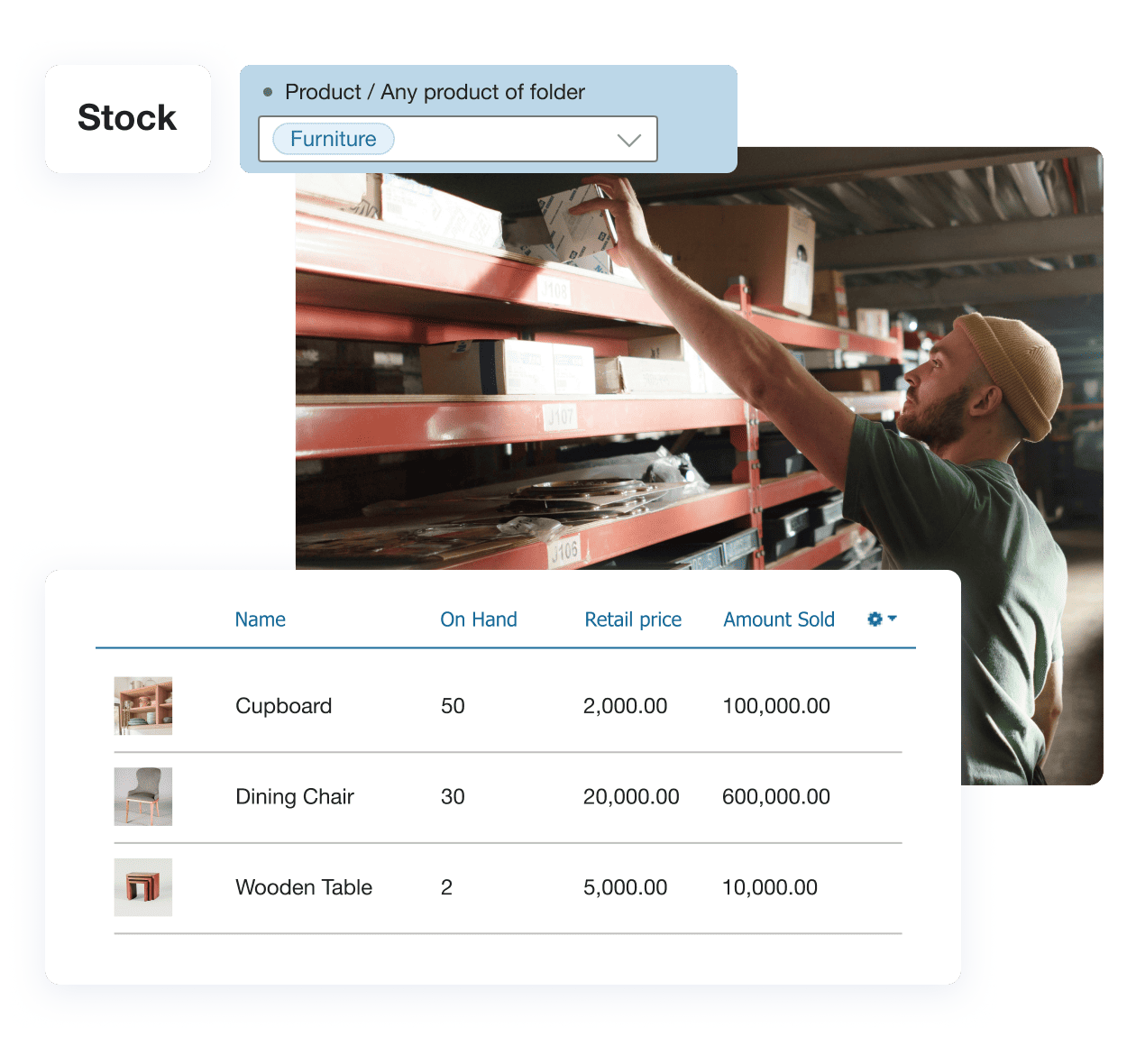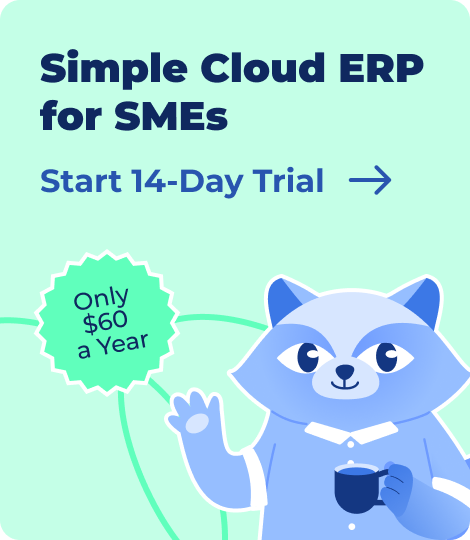Want to keep your supply chain running smoothly? Then you need a well-organized warehouse and spot-on inventory tracking. That’s where a warehouse management system (WMS) comes in — think of it as software that puts your warehouse operations on autopilot! Basically, a WMS helps you manage everything from stock levels to order fulfillment. And guess what? The market for these systems is booming! According to MarketsandMarkets, it’s worth $4 billion in 2024 and is expected to jump to $8.6 billion by 2029.
In this updated article, we’re sharing the top 20 free warehouse management software options for 2025. We’ve carefully selected solutions, updated all the pricing, and made sure the features and modules info are current. You’ll find some great choices for your business!
Let’s dive into finding the perfect free WMS software for you.
What is a Warehouse Management System? Exploring Key Features
A Warehouse Management System (WMS) — yes, that’s the WMS full form — is a software solution designed to optimize and automate all sorts of warehouse operations. Think of it as the brain behind your warehouse, handling everything from inventory tracking and order fulfillment to shipping and even labor management.
Key Features to Look for in WMS Software
When you’re on the hunt for the right warehouse management system (WMS), focusing on essential features is key. Here are some top functionalities to keep an eye out for:
- Inventory Tracking: Keep precise records of your stock, knowing what you have and where it is.
- Barcode Scanning: The ability to use barcode scanners for efficient receiving, picking, packing, and shipping, reducing errors and speeding up operations.
- Order Management: Streamline the process of receiving, processing, and fulfilling orders.
- Analytics & Reporting: Gain insights into your warehouse operations with valuable data and reports.
- App Integrations: Connect your WMS with other essential business tools and platforms.
- Sales Tracking: Monitor sales activity and integrate it with your inventory management.
- Slotting Optimization: Arrange items in your warehouse strategically for faster and more efficient picking.
- Shipping and Packing: Simplify and automate the shipping process, from preparing orders to generating labels.
Now that you’re familiar with what a warehouse management system (WMS) is and the key features you should look for in free warehousing software, let’s take a closer look at some of these tools.
20 Best Warehouse Management Software Solutions in 2025
No matter if you’re packing orders in your home garage or managing a bustling business with warehouses all over the place, we’ve got you covered! There are definitely tools out there to level up your operations. So, let’s take a look at the very best free warehouse management software available in 2025.
Below, you’ll find a quick rundown of these solutions, including their ratings, key features, pricing info, and much more. Just a heads-up: the info comes straight from company websites, help centers, social media, and their support teams. Prices can wiggle a bit depending on your location, and we’re giving you average price ranges here. All this data is current as of April 25, 2025.
| WMS Software | Pricing (Year) | Score | Trial Period | Business Size | Bin Storage | Shipping and Packing | Multi-location | Barcode Generation | Batch Tracking | Serial Number Tracking | Reorder Points | Custom Workflows | Free Support | Deployment | ||
| Cloud | Desktop | Mobile | ||||||||||||||
$60–748 |
⭐⭐⭐⭐⭐ (5.0) |
14 Days |
Small to Medium |
✅ |
✅ |
✅ |
✅ |
✅ |
✅ |
✅ |
✅ |
✅ |
✅ |
❌ |
❌ |
|
No data |
⭐⭐⭐⭐ (4.7) |
Not Available |
Medium to Large |
✅ |
✅ |
✅ |
✅ |
✅ |
✅ |
✅ |
✅ |
✅ |
✅ |
❌ |
✅ |
|
No data |
⭐⭐⭐⭐ (4.7) |
Demo Only |
Medium to Large |
✅ |
✅ |
✅ |
✅ |
✅ |
✅ |
✅ |
✅ |
✅ |
✅ |
❌ |
✅ |
|
No data |
⭐⭐⭐⭐ (4.7) |
Live Demo Only |
Medium to Large |
✅ |
✅ |
✅ |
✅ |
✅ |
✅ |
✅ |
✅ |
✅ |
✅ |
❌ |
✅ |
|
$345–517+ per user |
⭐⭐⭐⭐ (4.7) |
15 Days |
All Sizes |
✅ |
✅ |
✅ |
✅ |
✅ |
✅ |
✅ |
✅ |
✅ |
✅ |
✅ |
✅ |
|
$348–2,988 |
⭐⭐⭐⭐ (4.6) |
14 Days |
Small to Medium |
✅ |
✅ |
✅ |
✅ |
✅ |
✅ |
✅ |
✅ |
✅ |
✅ |
❌ |
✅ |
|
$100–11,000+ |
⭐⭐⭐⭐ (4.6) |
50 free orders |
Small to Medium |
✅ |
✅ |
✅ |
✅ |
✅ |
✅ |
✅ |
✅ |
❌ |
✅ |
❌ |
✅ |
|
$60–2,400+ |
⭐⭐⭐⭐ (4.6) |
14 Days |
Small to Medium |
✅ |
✅ |
✅ |
✅ |
✅ |
✅ |
✅ |
✅ |
✅ |
✅ |
❌ |
❌ |
|
$7,080–15,480+ |
⭐⭐⭐⭐ (4.6) |
Demo Only |
Small to Medium |
✅ |
✅ |
✅ |
✅ |
✅ |
✅ |
✅ |
✅ |
✅ |
✅ |
❌ |
✅ |
|
$11,940–14,940+ |
⭐⭐⭐⭐ (4.6) |
15 Days |
Small to Medium |
✅ |
✅ |
✅ |
✅ |
✅ |
✅ |
✅ |
✅ |
✅ |
✅ |
❌ |
✅ |
|
$2,148–21,588+ |
⭐⭐⭐⭐ (4.5) |
14 Days |
Small to Medium |
✅ |
✅ |
✅ |
✅ |
✅ |
✅ |
✅ |
✅ |
✅ |
✅ |
❌ |
❌ |
|
$2,388–11,988 |
⭐⭐⭐⭐ (4.5) |
14 Days |
Small to Medium |
✅ |
✅ |
✅ |
✅ |
✅ |
✅ |
✅ |
✅ |
✅ |
✅ |
✅ |
✅ |
|
$4,560–12,960 |
⭐⭐⭐⭐ (4.5) |
14 Days |
Small to Medium |
✅ |
✅ |
✅ |
✅ |
✅ |
✅ |
✅ |
✅ |
✅ |
✅ |
❌ |
❌ |
|
$488–1,564 per user |
⭐⭐⭐⭐ (4.5) |
30 Days |
Small to Medium |
✅ |
✅ |
✅ |
✅ |
✅ |
✅ |
✅ |
✅ |
✅ |
✅ |
❌ |
✅ |
|
No data |
⭐⭐⭐⭐ (4.5) |
Demo only |
Small to Medium |
✅ |
✅ |
✅ |
✅ |
✅ |
✅ |
✅ |
✅ |
✅ |
✅ |
❌ |
✅ |
|
No data |
⭐⭐⭐⭐ (4.5) |
14 Days |
Small to Medium |
✅ |
✅ |
✅ |
✅ |
✅ |
✅ |
✅ |
✅ |
✅ |
✅ |
✅ |
✅ |
|
$80–120 |
⭐⭐⭐⭐ (4.3) |
7 Days |
Small Businesses |
✅ |
✅ |
✅ |
✅ |
✅ |
✅ |
✅ |
✅ |
✅ |
✅ |
✅ |
✅ |
|
$350–1,150 perpetual |
⭐⭐⭐⭐ (4.2) |
7 Days |
Small to Medium |
✅ |
✅ |
✅ |
✅ |
✅ |
✅ |
✅ |
✅ |
❌ |
✅ |
✅ |
✅ |
|
$348+ |
⭐⭐⭐⭐ (4.0) |
30 Days |
Small to Medium |
❌ |
✅ |
✅ |
✅ |
❌ |
❌ |
✅ |
✅ |
✅ |
✅ |
❌ |
✅ |
|
$288–1,788+ |
⭐⭐⭐ (3.8) |
14 Days |
Small to Medium |
✅ |
❌ |
✅ |
✅ |
❌ |
❌ |
✅ |
✅ |
✅ |
✅ |
❌ |
✅ |
|
Finding the Best WMS Systems for You
Now that you have a handle on what a warehouse management system (WMS) does, you’ll find there’s a bunch of free WMS software that can act as the backbone of super-efficient warehouse operations.
And here’s the great part: you definitely don’t need to spend a fortune to get your warehouse running like a well-oiled machine! That’s why we’ve put together a list of the top 20 WMS software options that will help you optimize your inventory management with loads of different features.
Ready to dive in and find the perfect free WMS software for your needs? Let’s get started!
🧊 4 Free Inventory Ckecklists
Learn how to manage stock, set up your warehouse, track barcodes, and build product cards for e‑commerce — even if you’ve never done it before
✅ Inventory management
✅ Warehouse setup
✅ Barcode tracking
✅ E-commerce product cards
Kladana — Overview
![]()
Kladana is a comprehensive cloud‑based ERP system that seamlessly integrates inventory, sales, order processing, and manufacturing management. It can also incorporate essential tools for inventory management, sales tracking, and manufacturing processes, offering a clear, unified view of your operations.
This one is useful for retail stores, wholesalers, manufacturers, and e‑commerce businesses looking to enhance operational efficiency without incurring significant costs.
It helps digitize operations and automate critical processes, enabling businesses to gain clear insights for making confident decisions. Its user‑friendly interface and customizable workflows adaptable to various industries and business models stand out.
If you are looking for the best free WMS tool, Kladana can be a great asset for managing inventory, processing orders, or tracking production. It can be your centralized hub for all your warehouse operations.
Key Features
- Inventory Tracking: Real‑time stock level monitoring for businesses to maintain optimal inventory.
- Order Management: Simplify order entries, processing, and fulfillment for timely deliveries.
- Analytics and Reporting: Get detailed reports and analytics, helping businesses make informed decisions.
- Multi‑Location Support: Manage inventory across multiple warehouse locations, ensuring seamless operations.
- Barcode Scanning: Enable quick and accurate inventory updates through barcode scanning.
- API and Integrations: Seamlessly integrate Kladana with popular platforms like Shopify, Zoho Books, Hubspot, and WooCommerce.
- Security: Ensure data protection with advanced security features.
Pros & Cons
Pros
- Affordable: Offers a free plan and affordable paid plans.
- User‑Friendly: Provides an intuitive interface that is easier to use.
- Feature‑Rich: Includes inventory management, sales, order processing, and manufacturing management.
- Transparent Management: Allows for easy tracking of products and maintaining records.
- Top‑Notch Features: Includes expiration date and batch tracking, which are crucial for certain industries like dairy.
- Online Order App: Convenient for managing online sales.
Cons
- Limited deployment options: No downloadable desktop or mobile versions.
- Limited integrations: There are few integration options with all third‑party systems or platforms you need.
Pricing:
A free version of Kladana provides essential features suitable for small businesses. For businesses requiring more advanced functionalities, Kladana offers various pricing tiers.
Paid plans for Kladana start at $60/year, while the most popular Business Plan costs roughly $400 a year. You should avail yourself of a free trial and test the full functionality to choose the plant ideal for your business requirements.
Score: 5.0
⚡ Still managing your warehouse with spreadsheets?
Switch to Kladana’s WMS — faster fulfilment, accurate stock, less hassle
Shiphero — Overview
![]()
A cloud‑based shipping and logistics platform that helps streamline shipping operations for eCommerce businesses. Leverage inventory management, order fulfillment, shipping, and returns management.
Key Features
- Cloud-based warehouse management optimized for eCommerce and 3PLs
- Built-in barcode scanning and real-time inventory updates
- Automated pick, pack, and ship workflows with batch processing
- Multi-warehouse management with smart shipping carrier integrations
- Mobile app for warehouse operations (iOS support)
Pros & Cons
Pros
- Intuitive and modern interface designed for warehouse teams
- Offers 24/7/365 support without additional fees for paid plans
- Strong API and integrations with major ecommerce platforms (Shopify, Amazon, etc.)
- Offers built-in barcode generation and scanning capabilities
- Supports detailed bin location tracking for efficient warehouse organization
Cons
- Focused heavily on ecommerce — less suited for non-ecommerce industries
- Requires solid implementation process; not plug-and-play
- Limited customization for deeply complex workflows compared to some ERP-integrated WMS
- Only native mobile app for iOS; limited Android support
Score: 4.7
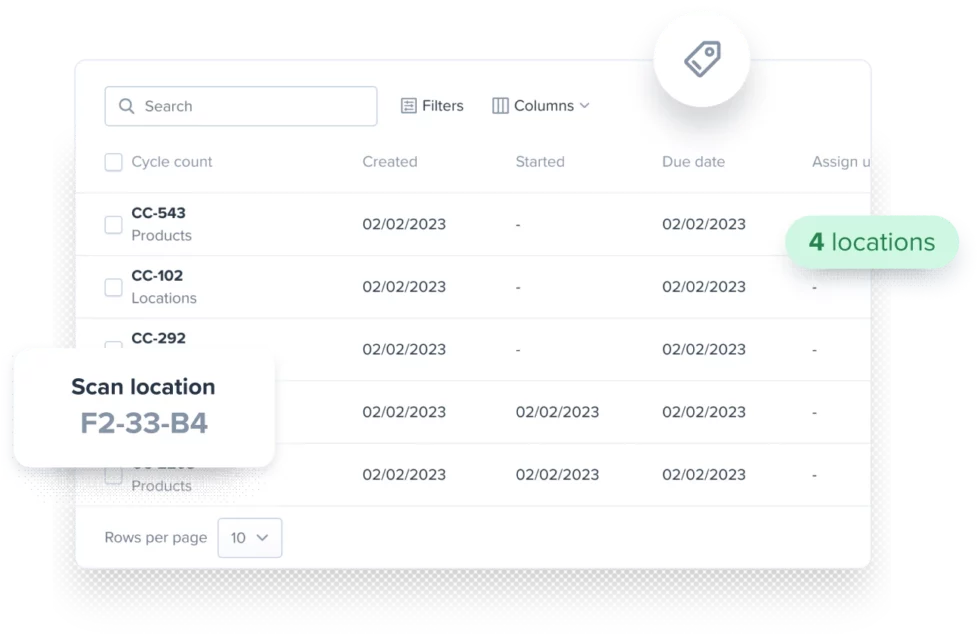
Acumatica — Overview
![]()
Acumatica is a cloud‑based ERP solution with a robust WMS module, which stands out for its flexibility and ease of integration with other business applications. Acumatica is a free WMS which is known for its flexibility, scalability, and ease of use. Moreover, features like inventory tracking, order management, warehouse optimization, and advanced reporting make it a favorite among small and medium businesses.
Key Features
- Warehouse Management
- Inventory Control
- Lot and Serial Tracking
- Mobile Access
Pros & Cons
Pros
- Highly customizable workflows, fits different industries
- Integrated deeply with ERP modules (finance, CRM, manufacturing)
- Offers advanced shipping and packing features, including integration with major carriers
- Strong multi-location inventory, lot, and serial number tracking
Cons
- Complex setup and configuration; usually requires implementation partners
- Learning curve is steep for non-technical users
- Advanced features (e.g., warehouse automation) require additional licensing
Score: 4.7
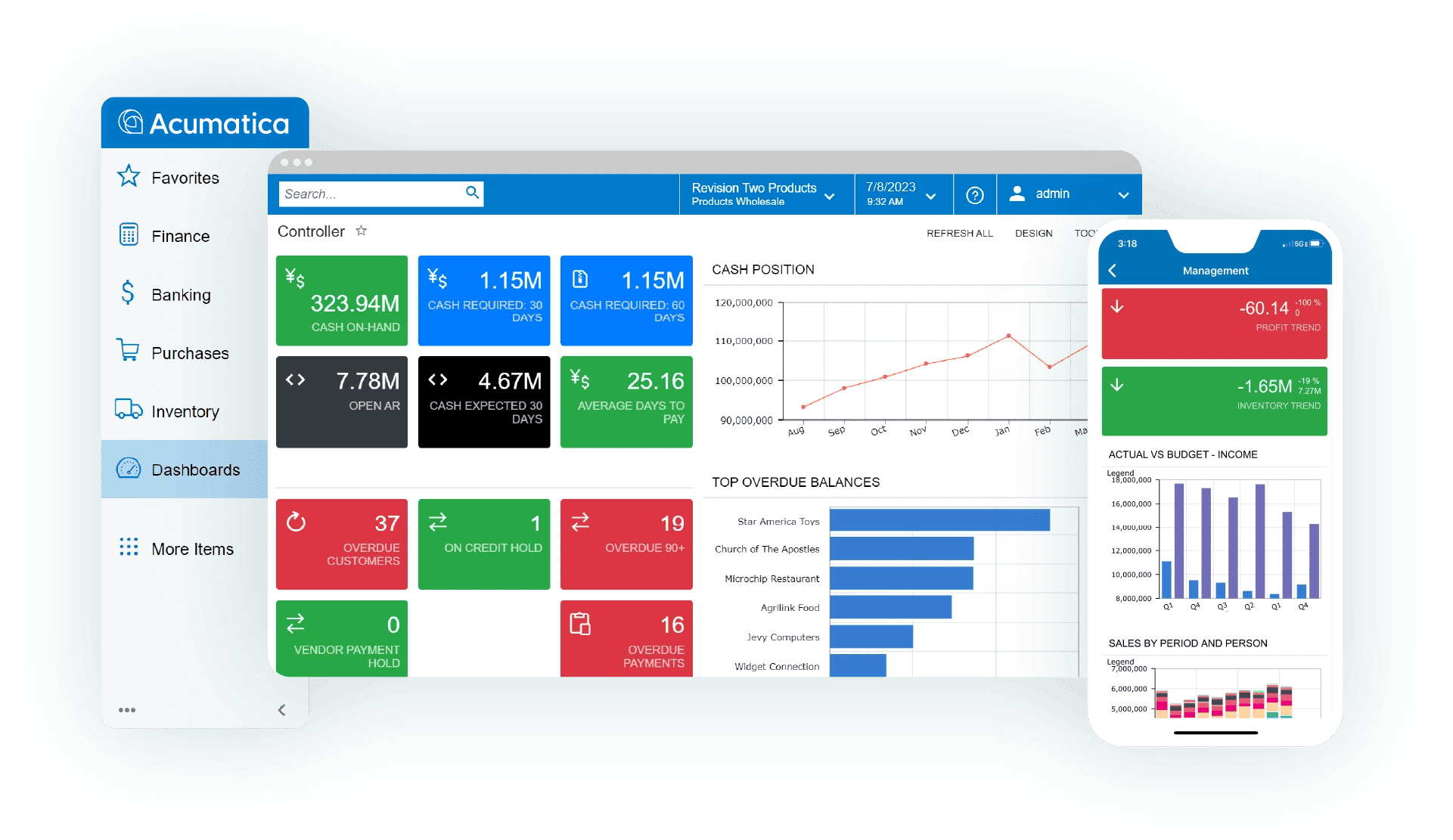
Oracle — Overview
![]()
Oracle Warehouse Management Cloud (WMS) is a sophisticated solution designed for large enterprises looking for a robust and scalable system. NetSuite WMS integrates seamlessly with other Oracle NetSuite modules, creating a unified platform for managing various business functions. Leverage its features in terms of inventory management, order fulfillment, labor management, and warehouse optimization.
Key Features
- Lot and Serial Tracking
- Cost Management
- Real‑Time Inventory Visibility
- Replenishment Planning
Pros & Cons
Pros
- Extremely powerful and scalable for global operations
- Advanced warehouse automation, robotics integration, and optimization features
- Deep multi-location, lot, batch, and serial number management
- Native integrations with Oracle Cloud ERP, SCM, and Transportation Management
- Strong security and compliance capabilities
Cons
- Implementing and configuring it may require significant training and expertise
- Requires dedicated IT staff or partners for maintenance and upgrades
- Complexity may be overwhelming for small businesses
- Limited flexibility if trying to customize beyond Oracle’s framework
Score: 4.7
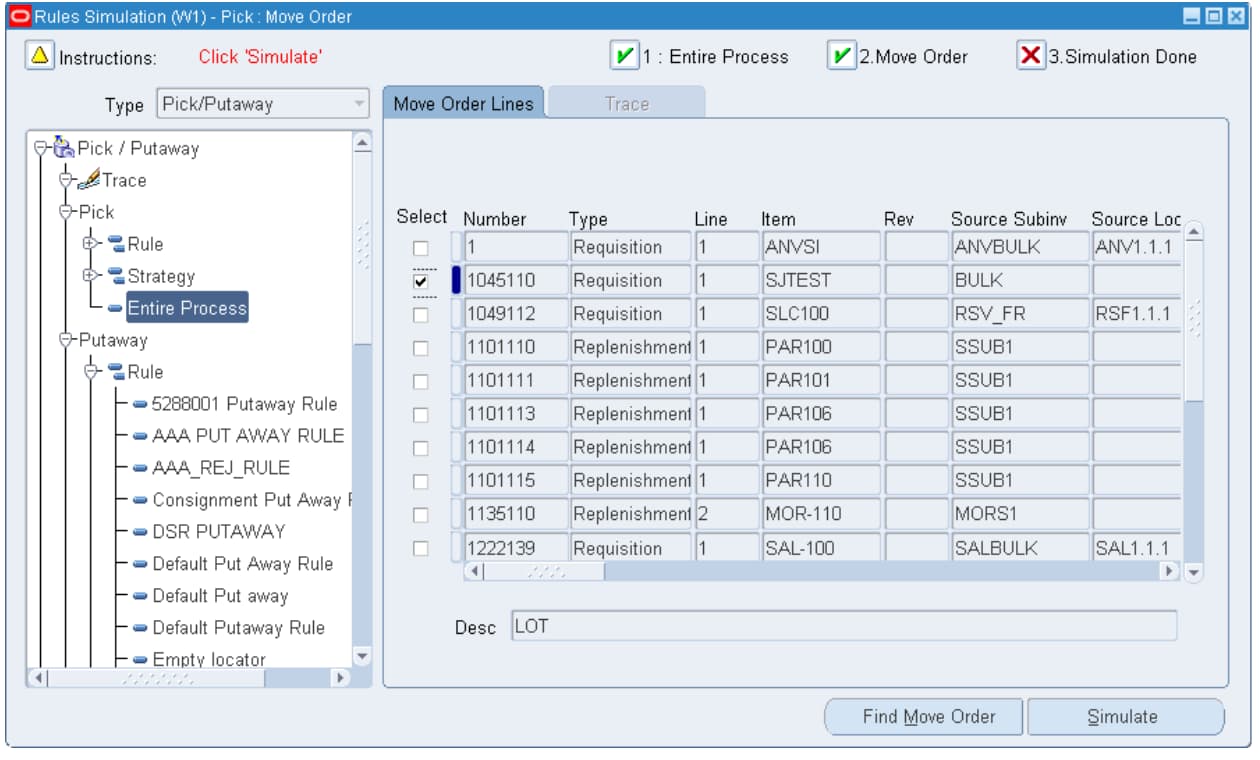
Odoo — Overview
![]()
Odoo is an open‑source suite of integrated business applications, including a robust inventory and warehouse management module (WMS). The WMS component has many features that integrate with other business processes. This free WMS software also supports barcode scanning, serial and batch tracking, and detailed reporting, improving inventory management accuracy and efficiency.
Key Features
- Advanced Routing
- Double‑Entry Inventory
- Warehouse Management
- Integration with Other Odoo Apps
Pros & Cons
Pros
- Highly modular and customizable
- Allows setting of minimum stock levels and provides low stock alerts
- A large community is providing necessary support and resources
- Comprehensive integration with other Odoo applications
- Offers support without additional fees for paid plans
- Highly customizable workflows and open-source flexibility
Cons
- Setting up and configuring can be difficult
- Requires technical expertise for customization
- Costs can add up with additional modules
- Some advanced warehouse features (like wave picking, routing optimization) need custom development or third-party modules
Pricing
One App Free
Free
Access to any single Odoo app (e.g., Invoicing, CRM, Inventory)
Upgrade required for access to multiple appsStandard Plan
$35/user monthly
Full access to all Odoo apps and modules (Sales, CRM, Inventory, MRP, Accounting, HR, etc.)
Optional implementation services and third-party integrations availableCustom
$54/user monthly
Includes all modules plus custom developments and advanced configurations
Options for custom hosting and premium support
Score: 4.7
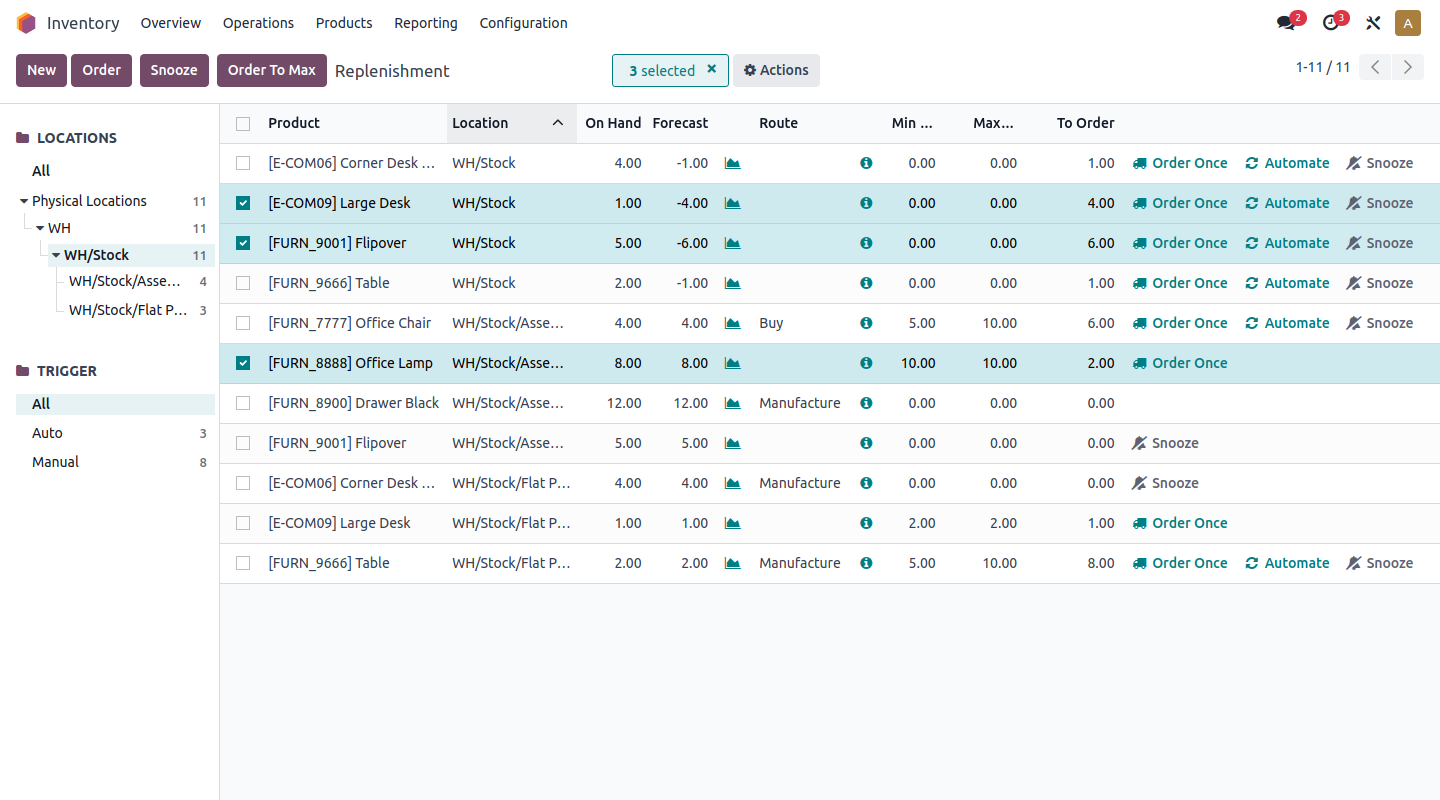
Zoho Inventory — Overview
![]()
Zoho Inventory is cloud‑based inventory management software designed to help businesses track stock levels, manage orders, and streamline their warehouse operations. Its integration allows it to work with third‑party platforms like Amazon, eBay, and Shopify. Many powerful automation features also include order processing, stock adjustments, and invoice generation. Moreover, the detailed reporting and analytics capabilities can provide insights into your inventory performance for data‑driven decisions.
Key Features
- Order Management
- Serial and Batch Tracking
- Insightful Reports
- Integrations
Pros & Cons
Pros
- User‑friendly and intuitive interface
- Includes picklists, packaging, shipping, and post-shipment tracking features
- Offers email and phone support without additional fees for paid plans
- Supports multi-warehouse management, barcode scanning, batch & serial tracking
- Integrations with popular eCommerce platforms and other business tools
Cons
- Limited advanced warehouse automation (e.g., no native wave picking, putaway rules)
- Some WMS features (like batch/serial tracking, bins) are only available in higher-tier plans
- Custom workflow automation is limited compared to enterprise-grade WMS tools
- Reporting capabilities are solid but may lack advanced warehouse KPIs out of the box
Pricing
Standard
$39 per organization/month
$348 per organization/month
2 users
2 locations
500 orders/month
Composite items
Item groups
DropshipmentProfessional
$99 per organization/month
$948 per organization/month
2 users
4 locations
3,000 orders/month
Serial number tracking
Batch trackingPremium
$159 per organization/month
$1,548 per organization/month
2 users
6 locations
7,500 orders/month
2,000 bins/locations
UoM conversion
Barcode generation
Stock counting
Customization & AutomationEnterprise
$299 per organization/month
$2,988 per organization/month
7 users
10 locations
15,000 orders/month
5,000 bins/locations
Zoho Analytics
Multi-currency transactions for each contact
Score: 4.6
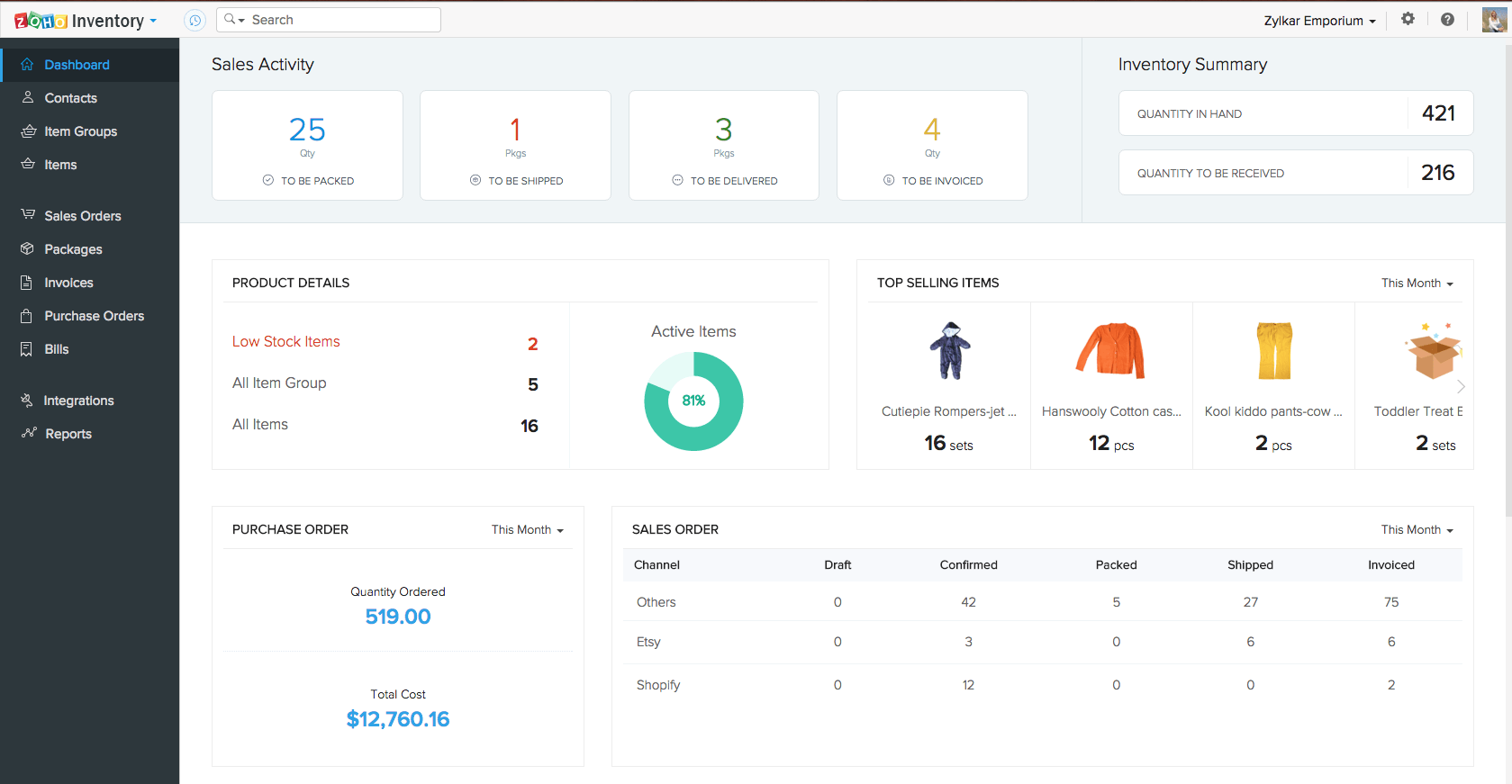
SKUSavvy — Overview
![]()
SKUSavvy is a modern warehouse management system that optimizes inventory management, order fulfillment, and warehouse operations. Its seamless integration with eCommerce platforms like Shopify, Amazon, and eBay is a huge plus for eCommerce businesses. Moreover, the slotting optimization feature can help place items in optimal locations, streamlining processes and reducing manual efforts.
Key Features
- Order management
- 3D Palletization
- Multi‑channel inventory management
- Integrations
Pros & Cons
Pros
- Intuitive interface and streamlined workflows
- Kitting and bundling to simplify complex order fulfillment
- Supports visual bin locations and warehouse mapping
- Includes pick, pack, and ship features with batch processing
- Comprehensive reporting and analytics
Cons
- Not as scalable as some other WMS solutions
- Offers extra support plans — $50–1,500/month; implementation — $2,750 plus $250/month support
- It has a higher learning curve for new users
Pricing
- Free WMS plan for up to 50 orders per month.
- Paid plans start at $0.25 per order for up to 500 monthly orders. For 500 to 5,000 orders, the price is $112.69/month.
Score: 4.6
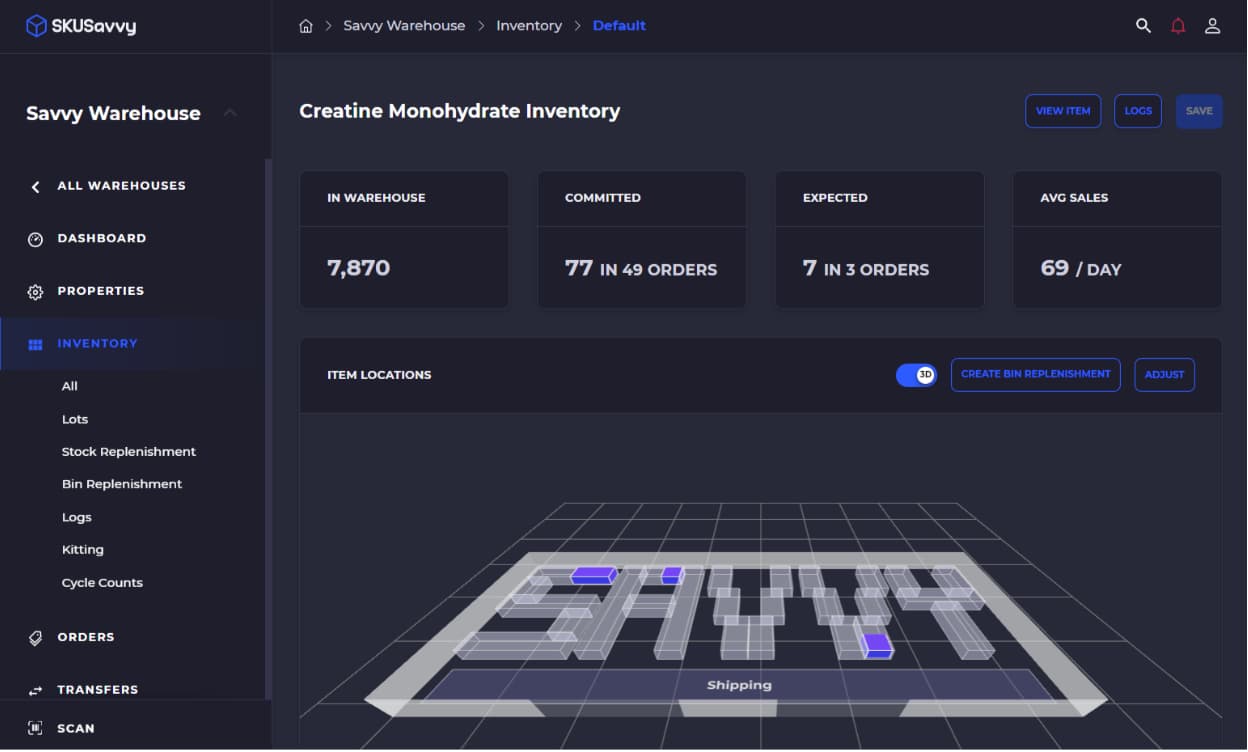
ERP Next — Overview
![]()
This is a comprehensive suite of applications for managing various business functions. One of its applications is a warehouse management system, which offers features like basic inventory tracking and advanced warehouse management functionalities like serial number tracking, batch management, and bin tracking. ERPNext is a free warehouse management system that is designed to be highly customizable and scalable, making it suitable for businesses of all sizes.
Key Features
- Multi-warehouse and bin-level inventory management
- Real-time stock tracking with batch and serial number support
- Barcode scanning for faster stock movements and audits
- Automated reorder points and low-stock alerts
- Integrated pick, pack, and ship workflows linked to sales and purchase modules
Pros & Cons
Pros
- Supports multi‑warehouse management
- Supports detailed bin location tracking, including rooms, rows, shelves, and bins
- Manages inventory across multiple warehouses and locations with a hierarchical structure
- Supports batch and lot tracking functionalities, including manufacturing and expiration dates
- Offers email and chat support without additional fees for paid plans; community support available for self-hosted users
Cons
- Implementation may require technical expertise for setup and customization
- Limited advanced warehouse features out of the box (e.g., no native wave picking, robotics integration, or automated putaway rules)
Pricing
For Small Business
Starting at $5/month
Includes 0.5 hours of CPU time, 0.2 GB database, and 2 GB storageFor Mid to Large Enterprises
Starting at $200/month
Includes 2 vCPUs, 4 GB memory, and 25 GB expandable storage
Some features are extra-chargeable:
- Private benches hosting: from $25/month
- Standard support services: from $50/month
- Premium dedicated hosting: from $400/month
- Hybrid hosting solutions: from $1,000/month
Score: 4.6
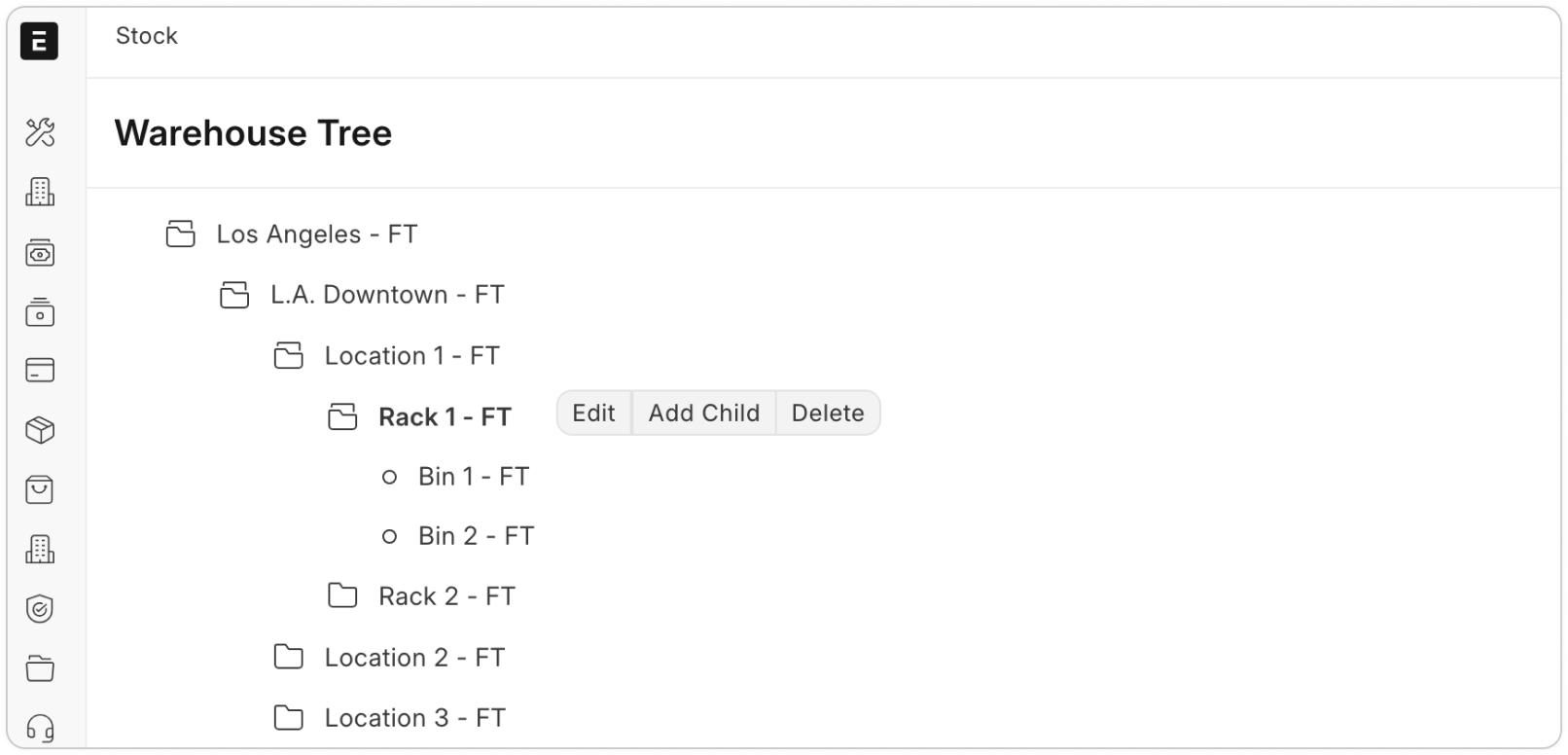
Pulpo WMS — Overview
![]()
Pulpo WMS is a user‑friendly cloud‑based warehouse management system designed to optimize warehouse operations for small and medium‑sized businesses. Features like inventory tracking, order fulfillment, and slotting optimization may suit businesses looking to enhance their warehouse efficiency.
Key Features
- Visual warehouse mapping with bin-level inventory tracking
- Mobile app-driven workflows for picking, packing, receiving, and shipping
- Real-time inventory updates and error prevention through guided processes
- Batch and serial number tracking for traceability
- Multi-location and multi-client warehouse management (ideal for 3PL providers)
Pros & Cons
Pros
- Intuitive visual layout for warehouse and inventory management
- Strong mobile-first approach — operations can be fully managed via smartphone app
- Supports multi-warehouse, multi-client, and returns management natively
- Real-time inventory and order tracking with barcode/RFID support
Cons
- Primarily optimized for eCommerce and 3PL warehouses, not traditional manufacturing warehouses
- Requires initial setup support to fully leverage features (not self-explanatory for new users)
- Fewer native integrations compared to larger WMS competitors
Pricing
Power Plan
$590/monthly
$7,080/yearly
3 users
Unlimited warehouses
Access to PULPO WMS Help Center & PULPO Academy3PL Plan
$1,290/monthly
$15,480/yearly
5 users
3PL features included
1 Analytics Suite user includedEnterprise Plan
Custom pricing
Custom integrations and features
Tailored user and warehouse options
Score: 4.6
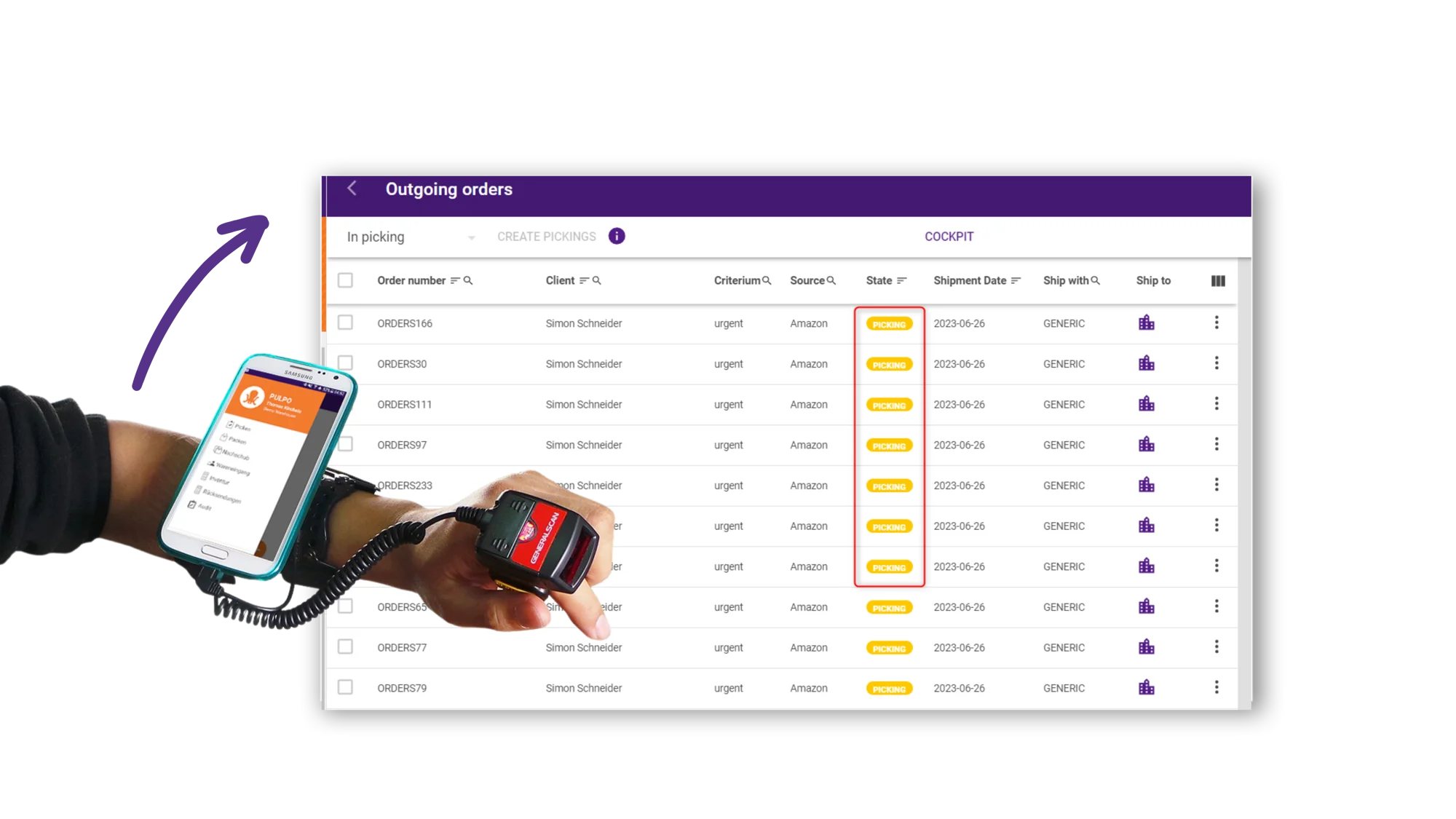
Deskera — Overview
![]()
Another cloud‑based ERP software that has a WMS module designed for small and medium‑sized businesses. You can opt for this warehouse management system free of cost when you just need to streamline stock management, order processing, and supply chain operations. With its user‑friendly interface and robust feature set, this free WMS software is ideal for small and medium‑sized enterprises. You can also integrate it with Deskera’s other modules, such as accounting, CRM, and HR.
Key Features
- Warehouse Management
- Shipping Management
- Reporting and Analytics
- Inventory & Order Management
Pros & Cons
Pros
- Get the all‑in‑one solution with a comprehensive suite of business applications, including WMS
- Supports row, rack, and bin-level tracking
- Includes pick, pack, and ship features with batch processing
- Offers email and chat support without additional fees for paid plans
- Easy to customize it per your business‑specific needs
- Highly reliable customer support
Cons
- Limited advanced warehouse automation features (e.g., no native wave picking or advanced routing optimization)
- A long learning curve to master all the features
- Reporting tools are good but lack highly specialized warehouse KPIs without additional configuration
- Support responsiveness can vary based on plan level — faster support usually available on premium tiers
Pricing
Growth
Starting at $995/month
5+ users
Includes Accounting, CRM, and Warehousing modulesMid Market
Starting at $1,245/month
5+ users
Adds Time Tracking, Landed Costs management, and a Report BuilderEnterprise
Custom price
50+ users
Features Multi-Book Accounting, Custom Dashboards & Reports, and Custom Integrations
Score: 4.6
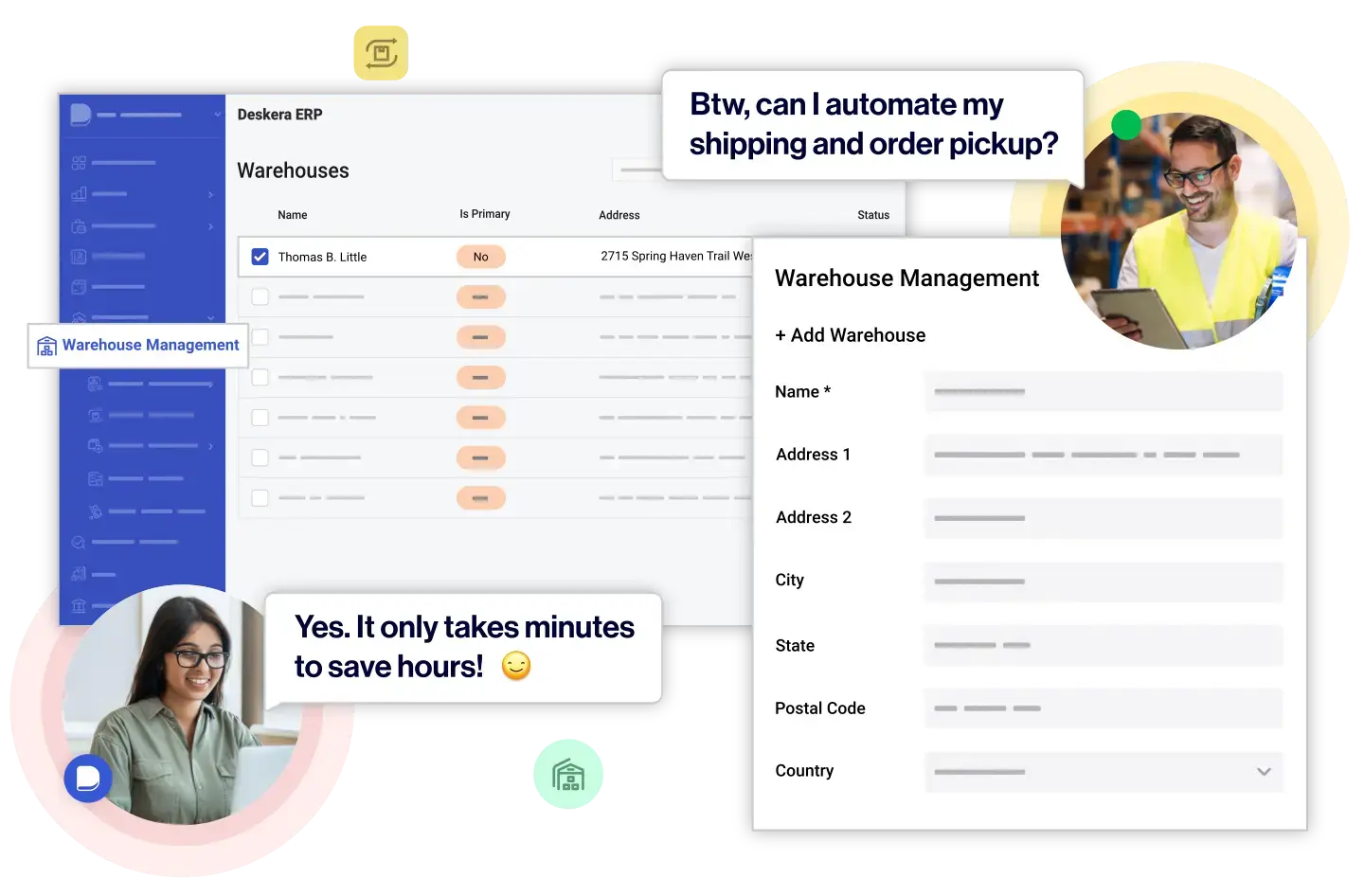
Katana — Overview
![]()
Katana is modern manufacturing ERP software designed for small — to medium‑sized manufacturers. It provides a visual overview of your entire manufacturing workflow, from raw material procurement to finished product delivery. This powerful WMS software helps in production planning and scheduling, inventory tracking, sales order management, purchase order management, material requirements planning (MRP), and integration with popular e‑commerce platforms.
Key Features
- Sales and Purchase Order Management
- Visual Production Planning
- Material Requirements Planning (MRP)
- Shop Floor Control
Pros & Cons
Pros
- Modern, intuitive interface with real-time warehouse data
- Native WMS integration with manufacturing, sales, and inventory workflows
- Easy onboarding for growing businesses moving from spreadsheets
- Offers live chat and email support without additional fees for paid plans
Cons
- Bin-level tracking and WMS features are available only on higher-tier plans
- It may take some time to get familiar with all the features
- You may need customization for specific manufacturing needs
Pricing
Starter
$199/month or $2,148/year
Basic manufacturing features
1 inventory location
Unlimited users, SKUs, and integrationsStandard
$399/month or $4,308/year
3 inventory locations
Includes kits & bundles, barcode scanning, multicurrency support
Advanced insights, custom templates, and custom fieldsProfessional
$899/month or $9,588/year
10 inventory locations
Adds demand planning, forecasting, WMS, Katana API, and price listsProfessional Plus
From $1,799/month or $21,588+/year
Unlimited inventory locations
Includes a dedicated account manager
Score: 4.5
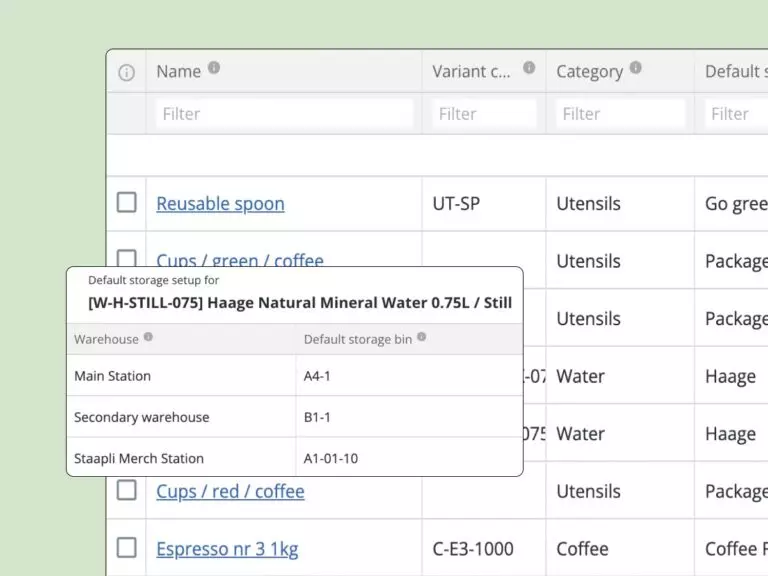
InFlow Inventory — Overview
![]()
This can be a great free warehousing software for businesses that want to track stock levels, manage orders, and streamline their warehouse operations. InFlow is suitable for businesses of all sizes and is particularly popular among wholesalers, distributors, and retailers. It is especially popular for eCommerce businesses since it provides integration options with eCommerce platforms like Shopify and Amazon.
Key Features
- Barcode Scanning
- Multiple Warehouse Management
- Order Fulfillment
- Purchase Order Management
Pros & Cons
Pros
- Comprehensive inventory and order management features
- Includes pick, pack, and ship features
- Integration with major e‑commerce platforms
- Detailed reporting and analytics tools
- Offers live chat and email support without additional fees for paid plans
Cons
- Customer support can sometimes be slow
- Costs go high for advanced features
- Limited advanced warehouse automation — no built-in wave picking, zone picking, or complex putaway strategies
Pricing
Start-up
$249/month or $2,388/year
2 users
1,200 sales orders per year
1 integration includedGrowth
$561/month or $5,388/year
5 users
12,000 sales orders per year
2 integrations includedScale
$1,249/month or $11,988/year
10 users
60,000 sales orders per year
3 integrations includedEnterprise
Custom pricing based on business needs
Mind that add-ons are extra-chargeable:
- Serial numbers — $29–69/month
- Advanced access rights — $99/month
- inFlow Stockroom — $49/month
- Showroom Pro — $99/month
- API access — $49–69/month
Score: 4.5
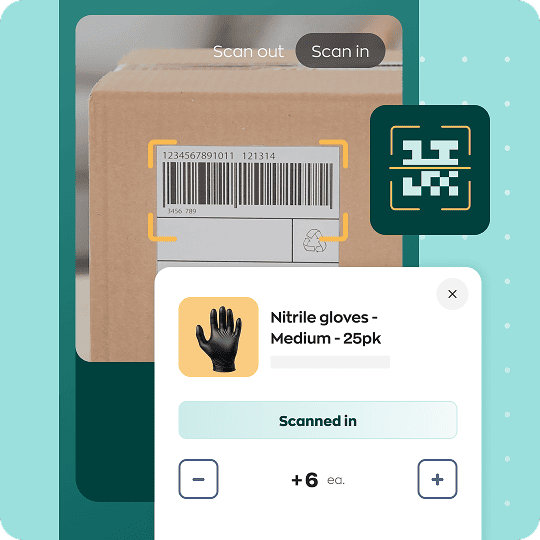
Unleashed — Overview
![]()
A cloud‑based inventory management software designed for manufacturers, wholesalers, and distributors. It offers features like inventory tracking, order management, and production management.
Key Features
- Multi-warehouse inventory management with bin locations
- Batch and serial number tracking for product traceability
- Reorder alerts and automated stock replenishment
- Barcode scanning for streamlined receiving, picking, and dispatch
- Real-time inventory visibility integrated with sales and purchasing workflows
Pros
- Includes pick, pack, and ship features with batch processing
- Offers built-in barcode generation and scanning capabilities
- Provides customizable workflows and integrations via API
Cons
- Standard support included; advanced support plans available at additional cost
- Limited warehouse automation — no native support for advanced picking methods like wave or zone picking
- Batch and serial number tracking are available, but full functionality requires higher-tier plans
Pricing
Medium
$380/month or $4,560/year
3 users includedLarge
$710/month or $8,520/year
8 users includedLarge Plus
$1,080/month or $12,960/year
20 users included
Add-ons are billed separately:
- ecommerce integration — $30/month
- B2B ecommerce store — $129/month
- support packages — $79–239/month
- onboarding — $449–5,549 (one-time fee)
- advanced inventory manager — $100/month
- business intelligence module — $39/month
Score: 4.5
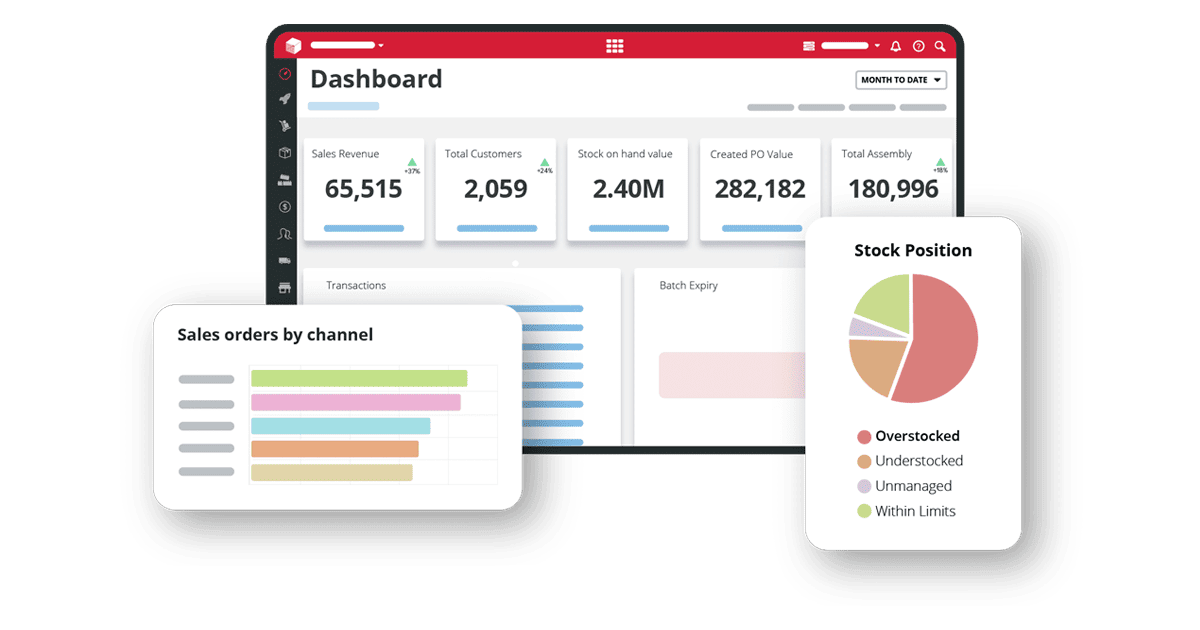
MRPEasy — Overview
![]()
Another cloud-based manufacturing ERP software that can work well for medium‑sized manufacturers is. It offers a range of features for production planning, inventory management, and order processing. This is not a dedicated free WMS software, but it simplifies manufacturing processes and improves efficiency through a centralized platform for managing all aspects of production.
Key Features
- Manage multiple warehouse locations with detailed bin tracking for precise inventory control
- Ensure full traceability of products through batch and serial number management
- Utilize barcode scanning to streamline warehouse operations and reduce manual errors
- Set minimum stock levels to trigger automatic purchase orders, preventing stockouts
- Seamlessly connect warehouse operations with production planning and sales order processing for end-to-end visibility
Cons
- Limited advanced WMS automation — no native wave picking, zone routing, or robotics integration
- Not suitable for non‑manufacturing businesses
- Some advanced features may require additional training
- Basic reporting for warehouse operations — more advanced analytics require external tools
Pricing
Starter
$44/user per month or $488/user per year
Includes main features and standard integrationsProfessional
$67/user per month or $737/user per year
Access to professional-level featuresEnterprise
$90/user per month or $988/user per year
Includes enterprise-grade functionalitiesUnlimited
$142/user per month or $1,564/user per year
Full feature package with no usage limits
Score: 4.5
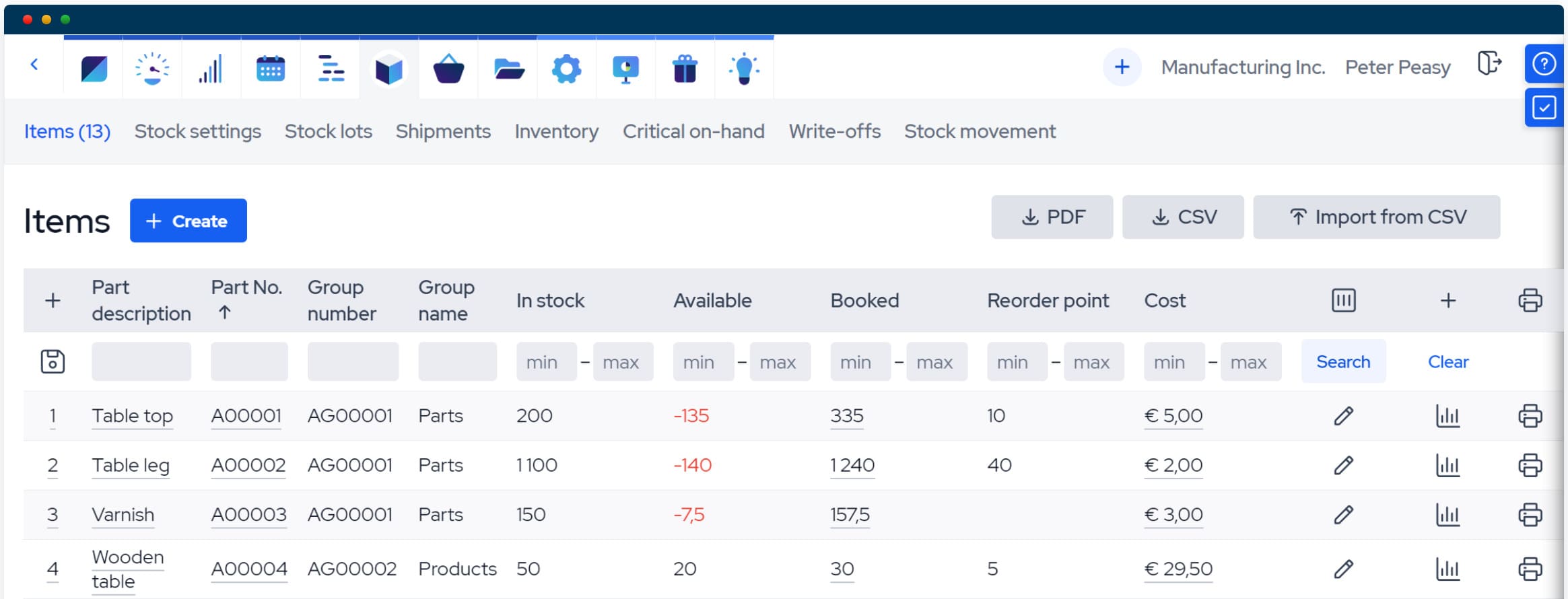
Linnworks — Overview
![]()
Linnworks is an eCommerce‑focused inventory and order management platform that centralizes multi‑channel operations. This tool integrates with numerous sales channels, providing centralized control over inventory and orders.
Key Features
- Centralized inventory and order management across multiple sales channels (Amazon, eBay, Shopify, etc.)
- Warehouse management with bin location tracking, stock transfers, and order routing
- Built-in shipping management with rate shopping and courier integrations
- Automation tools for stock updates, purchase orders, and fulfillment workflows
- Real-time analytics and customizable reporting dashboards
Pros & Cons
Pros
- Strong multi-channel integration — handles large product catalogs and marketplaces
- Real-time inventory syncing and stock control across multiple warehouses
- Built-in shipping label generation and carrier rate shopping
Powerful order automation and rule-based processing
Cons
- Steeper learning curve during initial setup and workflow configuration
- Reporting customization options can be limited for very detailed operational KPIs
- Customer support responsiveness varies by plan; premium support comes at extra cost
Score: 4.5
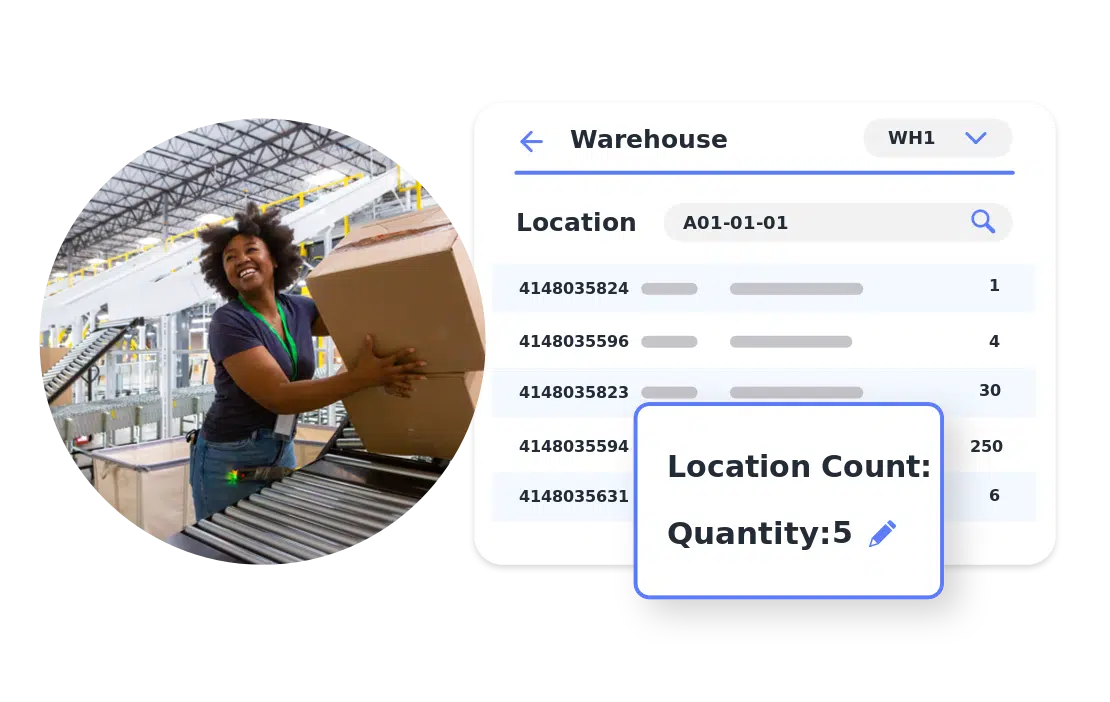
Fishbowl — Overview
![]()
Fishbowl is an inventory management solution tailored for small to medium‑sized businesses, particularly those using QuickBooks. It offers features for inventory control, order management, and manufacturing processes, making it a versatile tool for various industries.
Key Features
- Multi-warehouse and bin-level inventory management
- Barcode scanning for receiving, picking, packing, and shipping
- Automated reorder points and stock alerts
- Integrated order fulfillment from sales to shipping
- Seamless QuickBooks and Xero accounting integration
Pros & Cons
Pros
- Comprehensive inventory and manufacturing management
- Deep accounting integration with QuickBooks/Xero
- Scalable for growing small and medium businesses
- Real-time stock visibility
- Easy-to-use interface with fast onboarding
Cons
- Limited workflow and report customization
- High upfront licensing cost
- Only supports average costing (no FIFO/LIFO options)
- Variable customer support quality
- Primarily on-premise (cloud options are separate and limited)
Score: 4.5
Vyapar — Overview
![]()
A popular accounting and inventory management software designed specifically for small and medium‑sized businesses in India. It offers a range of features for billing, invoicing, sales and purchase reporting, and GST compliance. This software helps businesses streamline their operations by providing tools for inventory tracking, expense management, and financial reporting.
Key Features
- Financial Accounting
- Billing and Invoicing
- GST Compliance
- Multi‑Language Support
Pros & Cons
Pros
- GST compliance and integration with Indian tax regulations
- Affordable pricing plans
- Supports rack and bin-level tracking for efficient warehouse organization
- Offers email and chat support without additional fees for paid plans
Cons
- Primarily targeted at the Indian market
- Limited customization that can not be the same as other WMS software
- Offers basic order management features; however, advanced shipping and packing functionalities are limited
- Provides basic automation features but lacks advanced workflow customization
Pricing
Silver Plan
$79.99/year
3 companies
3 firms
multiple pricing for itemsGold Plan
$119.99/year
Unlimited companies
5 firms
Different rates for each party
Partywise profit and loss report
Manage godowns & transfer stock
Score: 4.3
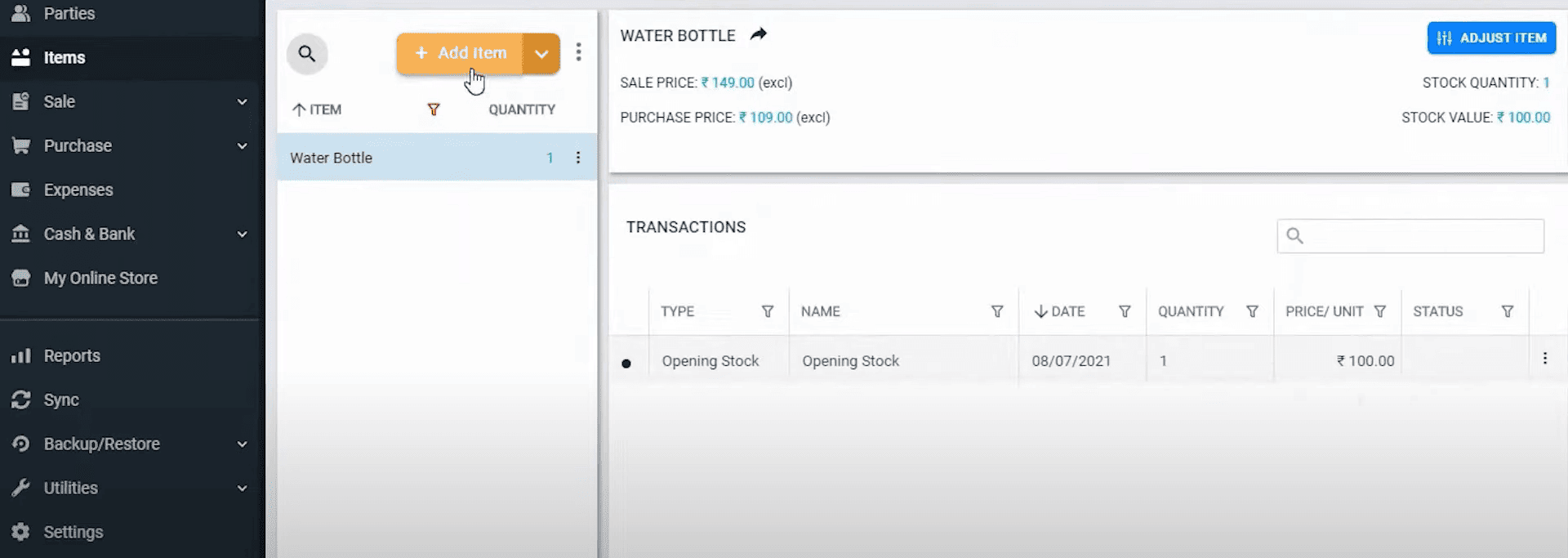
Marg ERP 9+ — Overview
![]()
A traditional yet powerful inventory and accounting software designed for small to medium‑sized businesses, particularly in India. This free WMS caters to various industries, offering inventory tracking, order management, distribution, and manufacturing features. Marg ERP 9+ is known for its extensive customization options and industry-specific features, making it a popular choice among businesses seeking a tailored solution.
Key Features
- Distribution Management
- Inventory Management
- Manufacturing Management
Pros & Cons
Pros
- The industry-specific features cater to different industry needs, offering tailored functionalities
- GST compliance and integration with Indian tax systems
- Supports rack-wise inventory management
- Manages multiple warehouses and branches
Cons
- UI may feel dated
- Limited warehouse automation — lacks advanced features like wave picking, automated putaway, and real-time task tracking
- Basic barcode and batch tracking — not as seamless or deeply integrated as in specialized WMS platforms
- Primarily on-premise — cloud capabilities are limited and less robust than true cloud-native systems
- Customization and scalability challenges — requires technical expertise to modify workflows for complex warehouse operations
Pricing
Marg ERP Nano
₹5,400 initial cost
₹2,340 annual renewal
Up to 450 bills per monthBasic Edition
₹9,999/$350 initial cost
₹3,870/$120 annual renewal
1 user with full rights (up to 2 users maximum)
2 companies maximum₹3,000/$150 per additional user
₹3,000 per additional companySilver Edition
₹13,500/$600 initial cost
₹4,640/$210 annual renewal
1 user with full rights + 1 user view-only access
₹3,000/$150 per additional user
₹3,000 per additional companyGold Edition
₹25,200/$1,150 initial cost
₹9,270/$400 annual renewal (up to 25 users/companies)
₹18,540/$800 annual renewal (for unlimited users/companies)
Score: 4.2
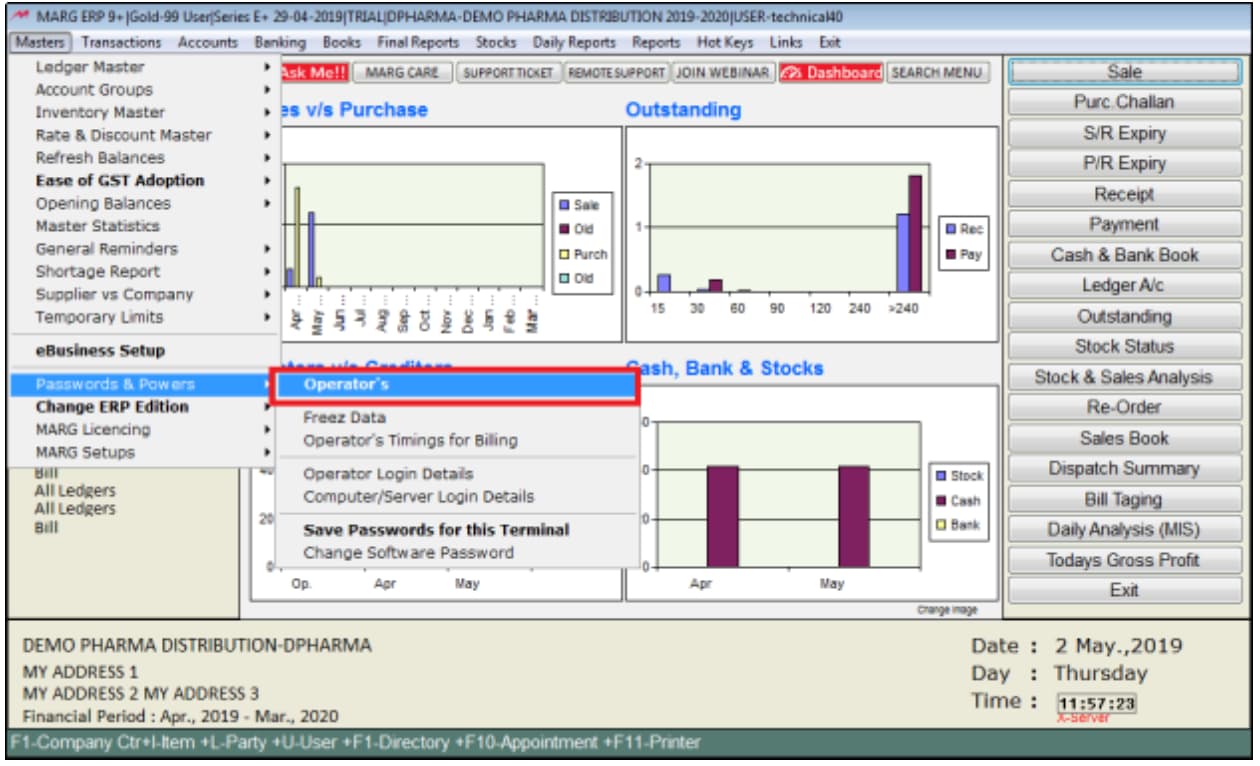
Square — Overview
![]()
Though a point‑of‑sale (POS) solution, Square offers a range of inventory management tools designed for small to medium‑sized businesses. Square’s inventory management capabilities provide essential tools for tracking stock levels, managing orders, and generating reports. You can integrate Square’s POS system to manage both sales and inventory from a single platform.
Key Features
- Inventory Tracking
- Inventory Adjustments
- Reporting
- Barcode Scanning
Pros & Cons
Pros
- User‑friendliness due to simple and intuitive interface
- Includes picklists, packaging, shipping, and post-shipment tracking features
- Supports multi‑location inventory management
- Offers email and phone support without additional fees for paid plans
Cons
- Limited advanced features compared to specialized WMS solutions
- Does not support bin-level inventory tracking
- Does not support batch or serial number tracking functionalities
- Provides basic automation features but lacks advanced workflow customization
- Limited reporting with basic reporting capabilities
Pricing
A Plus plan is available at $29/month and extra depending on the business type. Mind that extra processing fees are applied per transaction:
- In-person payments: 2.6% + $0.15 per transaction
- Online payments: 2.9% + $0.30 per transaction
- Manually entered payments (e.g., over the phone): 3.5% + $0.15 per transaction
Score: 4.0
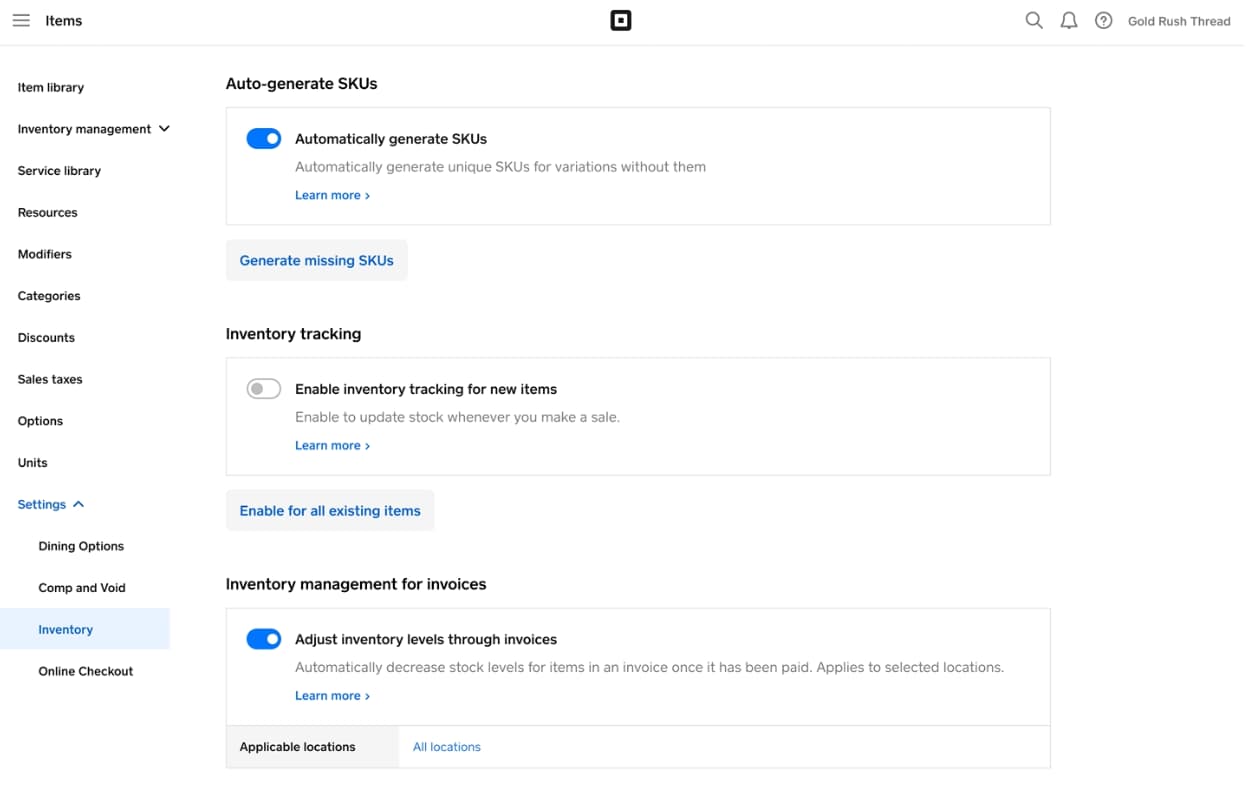
Sortly — Overview
![]()
Sortly offers an inventory management suite for small businesses, visual organizers, and those needing a simple solution for managing stocks across multiple locations. Its ease of use and visual approach make it a popular choice for businesses seeking a clear inventory management solution.
Key Features
- Visual Organization
- Customizable Fields
- Activity History
- Barcode and QR Code Scanning
Pros & Cons
Pros
- Very easy to set up and use
- Easy setup and implementation with mobile app access
- Multi‑location inventory management at affordable pricing
- Supports tracking inventory by location, including bins and aisles
- Offers built-in barcode and QR code generation and scanning capabilities
Cons
- Sortly focuses on inventory tracking and does not offer dedicated shipping or packing features
- Does not support batch or serial number tracking functionalities
- Provides custom fields and folders for organization but lacks advanced workflow automation
- Integration capabilities are less robust compared to other solutions
Pricing
Advanced
$49 per month
$288 per year
2 users
500 unique Items
Unlimited QR code label creationUltra
$149 per month
$888 per year
5 users
2,000 unique Items
Purchase ordersPremium
$299 per month
$1,788 per year
8 users
5,000 unique Items
Customizable role permissions
QuickBooks Online integrationEnterprise
Custom pricing
Score: 3.8
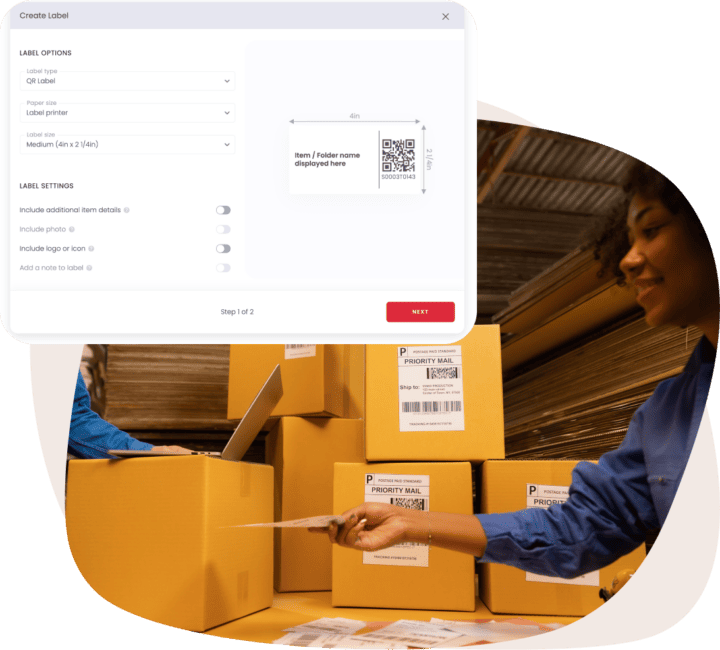
Benefits of Using Warehouse Management Software
Using a Warehouse Management System (WMS) can revolutionize how your business handles inventory, orders, and overall warehouse operations. A WMS is designed to boost automation, optimize processes, and ultimately drive significant improvements in accuracy, efficiency, and cost savings. This leads to happier customers and a healthier bottom line. Let’s explore the key advantages in more detail.
Improved Inventory Accuracy and Control
WMS systems provide real-time inventory tracking, minimizing discrepancies and ensuring you always have accurate stock levels. This prevents costly issues like stockouts and overstocking.
📍 Unicorn Natural Products, a food manufacturer, shared that before implementing Kladana, they managed all stock and production records manually in Excel spreadsheets. They struggled with maintaining timely updates on warehouse stocks, including received materials and shipped goods. This lack of real-time visibility made it difficult to identify which products were overstocked and which were in shortage, leading to wrong decisions and production delays.
Increased Efficiency and Productivity
With a WMS, many manual tasks like order processing, picking, packing, and shipping can be automated. This frees up your team to focus on more valuable activities, resulting in faster order fulfillment, increased throughput, and reduced labor costs — ultimately leading to cost savings.
Minimized Errors & Accidents
By integrating a WMS with your existing systems, you can automate workflows and reduce the risk of errors caused by manual data entry and human oversight. This directly contributes to efficiency and cost savings.
Better Decision-Making Through Data-Driven Insights
A WMS provides comprehensive data and analytics on inventory levels, order fulfillment, labor productivity, and more. These insights help you spot trends, optimize operations, and make data-driven decisions that boost efficiency and profitability, saving you money in the long run.
Improved Supplier and Customer Relationships
Efficient inventory management and order fulfillment, powered by a WMS, are crucial for building strong relationships. They ensure clear communication, smooth collaboration, and transparency, resulting in an efficient supply chain that meets the needs of everyone involved.
System Selections: Key Considerations Before Choosing WMS Tool
Choosing the right Warehouse Management System (WMS) for your business is vital. A poor choice can lead to costly issues. Here’s a quick guide to help you select the right WMS to supercharge your warehouse:
- Identify Your Needs and Gains: Pinpoint current bottlenecks and the processes that need improvement. Create a wishlist of WMS features and calculate potential cost savings and ROI.
- Onboard Your Team: Involve your team in the selection process. Set timelines, assign roles, and ensure everyone understands how the WMS will impact their daily tasks.
- Test A Few Tools: Take advantage of free demos and trial versions. Get a feel for the interfaces and see how well they fit with your systems and team.
- Compare and Contrast: Don’t just test one tool. Use several to compare pros and cons. Find the one that best meets your needs, feels intuitive, and offers the best value.
- Make Your Move to Purchase: After thorough research, demos, and comparisons, make your decision. Consider the vendor’s reputation, WMS ratings, and customer support reviews.
FAQs on Warehouse Management Systems
Below are some of the common questions about warehouse management systems. We’ve got them answered!
What is WMS?
WMS stands for Warehouse Management System. It’s software that helps businesses manage and optimize their warehouse operations, including inventory tracking, order fulfillment, and more. Think of it as the brain behind your warehouse, keeping everything organized and efficient.
What does WMS stand for?
WMS stands for Warehouse Management System — that’s the WMS full form.
What are the benefits of warehouse management software?
Warehouse management software offers numerous benefits, including improved inventory accuracy, increased efficiency, reduced labor costs, minimized errors, better data-driven decision-making, and stronger supplier and customer relationships. Essentially, it leads to cost savings and happier customers.
Is there free WMS software?
Yes, there are free WMS software options available, especially for small businesses or those starting. Many vendors also offer free trials or free versions with limited features. This article outlines several free or freemium WMS solutions.
Is it possible to get a free trial of a WMS before purchasing?
Yes, you can get a free warehouse management system trial that lets you test and experience the tool. This allows you to check if it meets your needs before committing to a purchase.
How do I choose the right WMS for my business?
When you have to choose a free WMS software, consider the following factors:
- Business needs: What specific challenges are you trying to solve?
- Budget: How much are you willing to invest?
- Features: What functionalities are essential for your operations?
- Scalability: Can the system grow with your business?
- Ease of use: Is the interface intuitive and user-friendly?
- Integrations: Does it connect with your existing systems?
- Vendor reputation and support: Is the vendor reliable and responsive?
Can I customize a WMS to fit my specific business needs?
Yes, most WMS solutions provide some level of customization to tailor the system to your specific workflows and processes. Some free warehouse management systems may be more flexible than others, allowing you to customize the system to your needs.
What types of businesses can benefit from a WMS?
WMS is useful for businesses managing inventories. For example, those with high inventory volumes, multiple warehouse locations, complex order fulfillment processes, or looking for data‑driven insights.
Is cloud‑based WMS better than on‑premise WMS?
Each WMS option has pros and cons. Cloud‑based solutions provide flexibility, scalability, and lower upfront costs, while on‑premise WMS tools offer more control and customization options. So choose according to your specific needs and budget.
How much does a WMS typically cost?
WMS costs vary depending on the vendor, features, and deployment model (cloud-based or on‑premise).
What support can I expect from a WMS vendor?
Expect online resources, knowledge bases, and phone or email support. Some also offer services like training, consulting, and implementation assistance.
How does a WMS help with inventory control?
A WMS provides real‑time visibility into stock levels, automating inventory tracking and enabling efficient cycle counting to prevent stockouts, overstocks, and inaccurate inventory records.
Can a WMS help with order fulfillment?
Yes, a WMS can streamline order fulfillment by automating order processing, optimizing picking routes, and generating shipping labels.
What are the challenges of implementing a WMS?
Implementing a WMS can be challenging for larger businesses with complex warehouse operations. Common challenges include data migration, employee training, and integration with existing systems.
